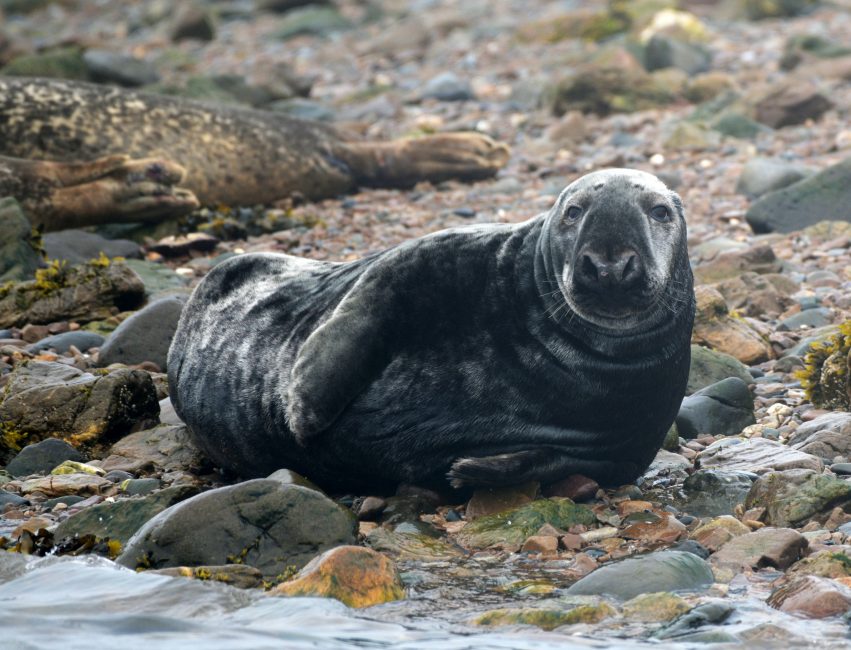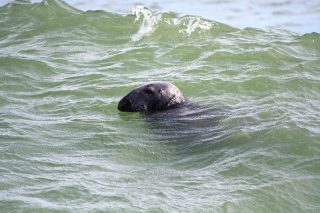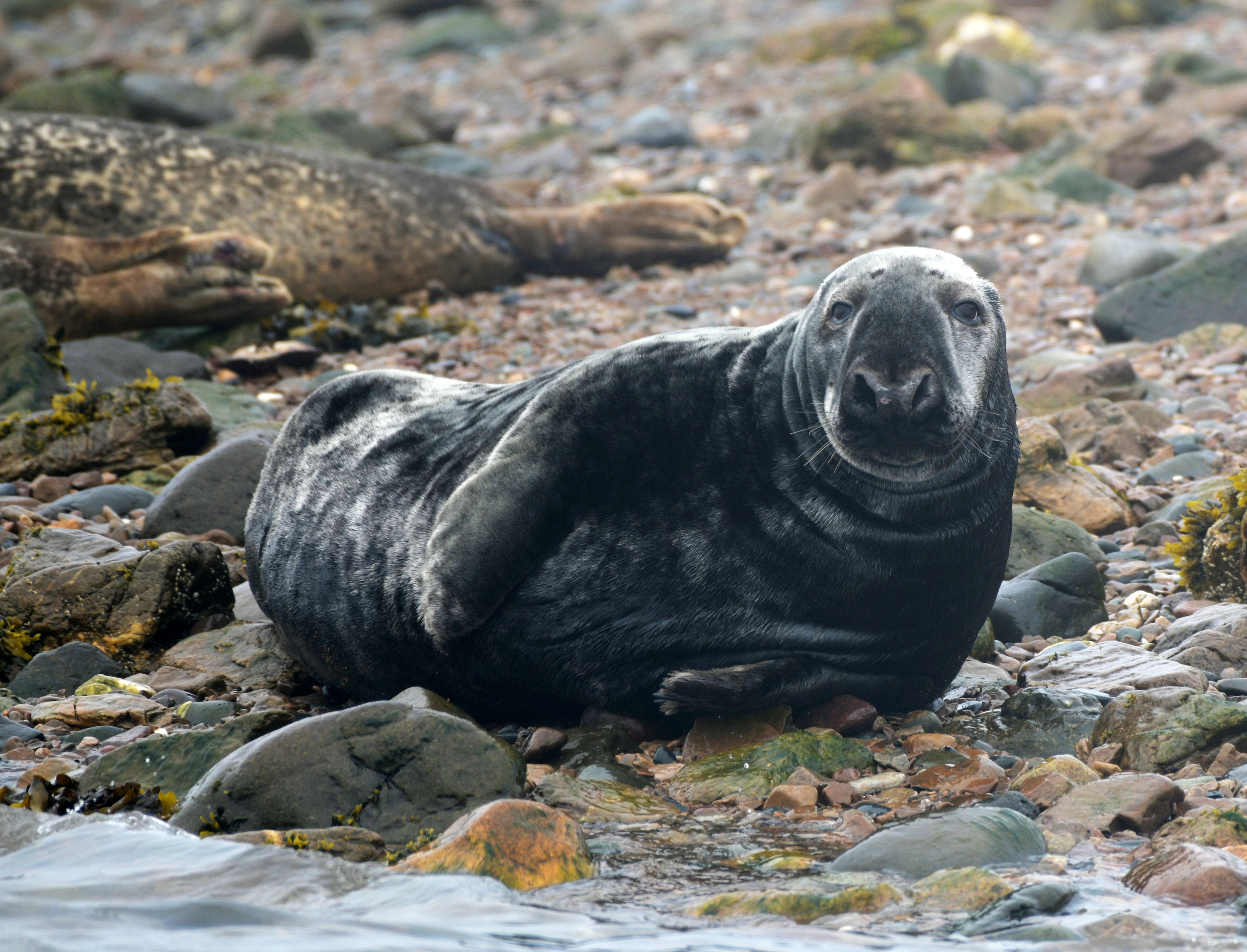
May 20, 2024
How to ID a Gray Seal
- as seen by -
 John Delaney
John Delaney
Of all the fascinating marine species found in coastal Maine, one of my favorites is the gray seal (Halichoerus grypus), a species I see frequently during my work as a whale watch naturalist. It’s a large, even ponderous animal when hauled out on a rocky tidal ledge, but when it hits the water, it transforms into a mammalian torpedo that can turn on a dime.
A gray seal is a distinctive-looking marine mammal. It shares its North Atlantic habitat with the harbor seal (Phoca vitulina), which can at times look similar to the gray, but there are differences. Whereas the harbor seal has an upturned snout and a muzzle resembling a dog, the gray seal has a long, sometimes curved nose that looks vaguely horse-like.
The gray seal is also larger than its close relative. A full-grown male gray seal can reach nearly 10 feet in length and weigh more than 800 pounds, nearly twice as large and heavy as the biggest harbor seal.
Gray seals were once exterminated throughout their range, in part because they were viewed as competitors for commercially valuable fish species. They have rebounded in the past few decades due to protection from legislation such as the Marine Mammal Protection Act, which safeguards all marine mammal species in US waters. Gray seals are still at risk from human-related factors such as pollution, collisions with water vessels, and sometimes land vehicles, and entanglement in fishing gear. More recently, a pathogenic threat in the form of the H5N1 avian influenza virus has impacted gray seals along with other pinniped populations throughout the Americas.
Nikon D850




Leave a Comment